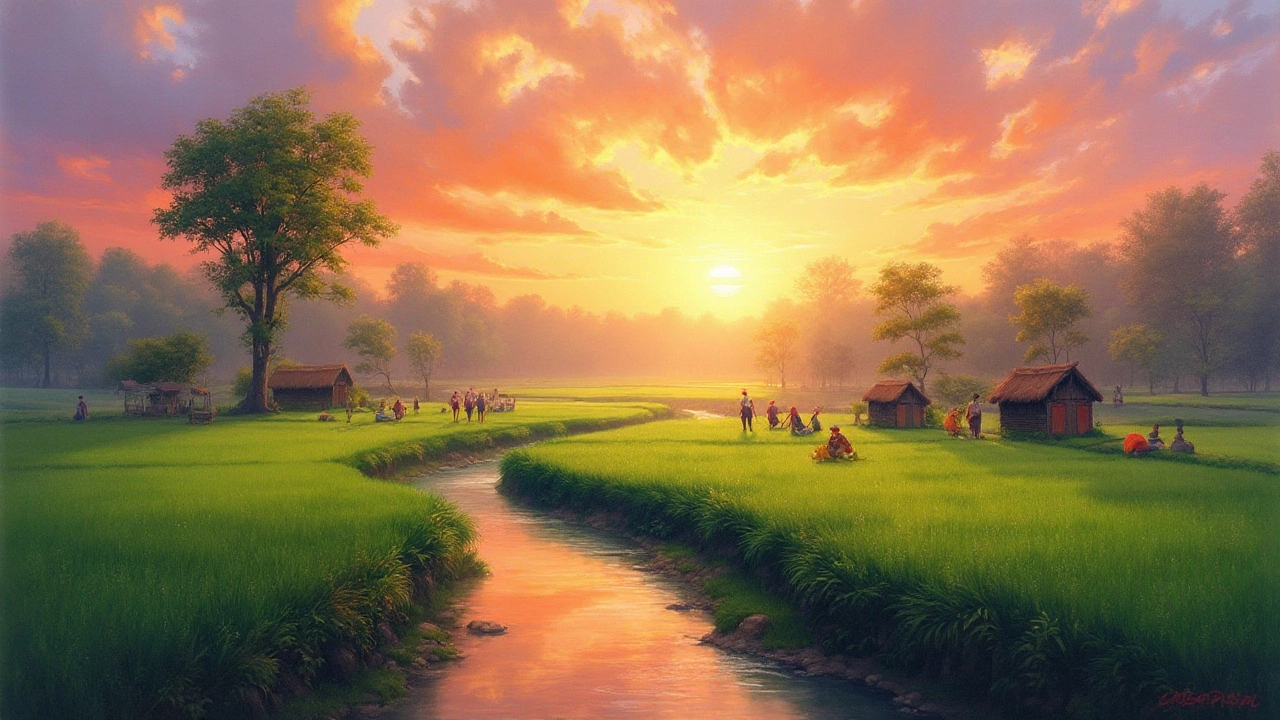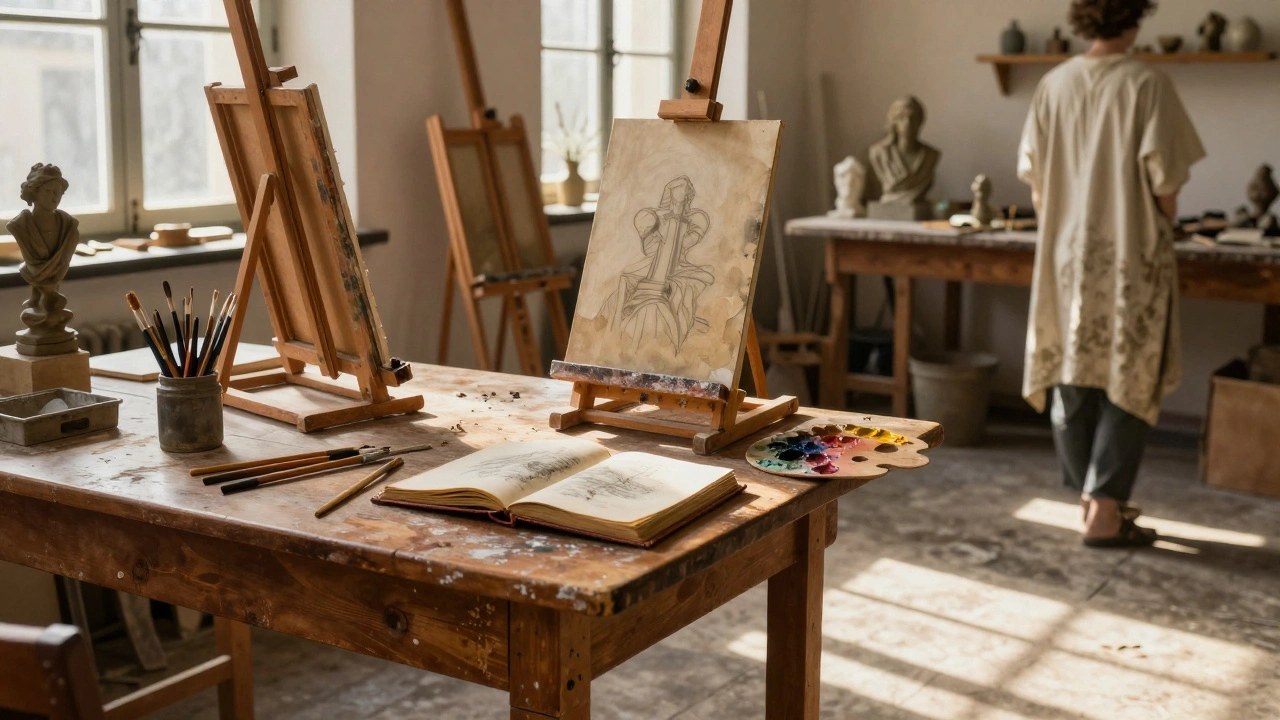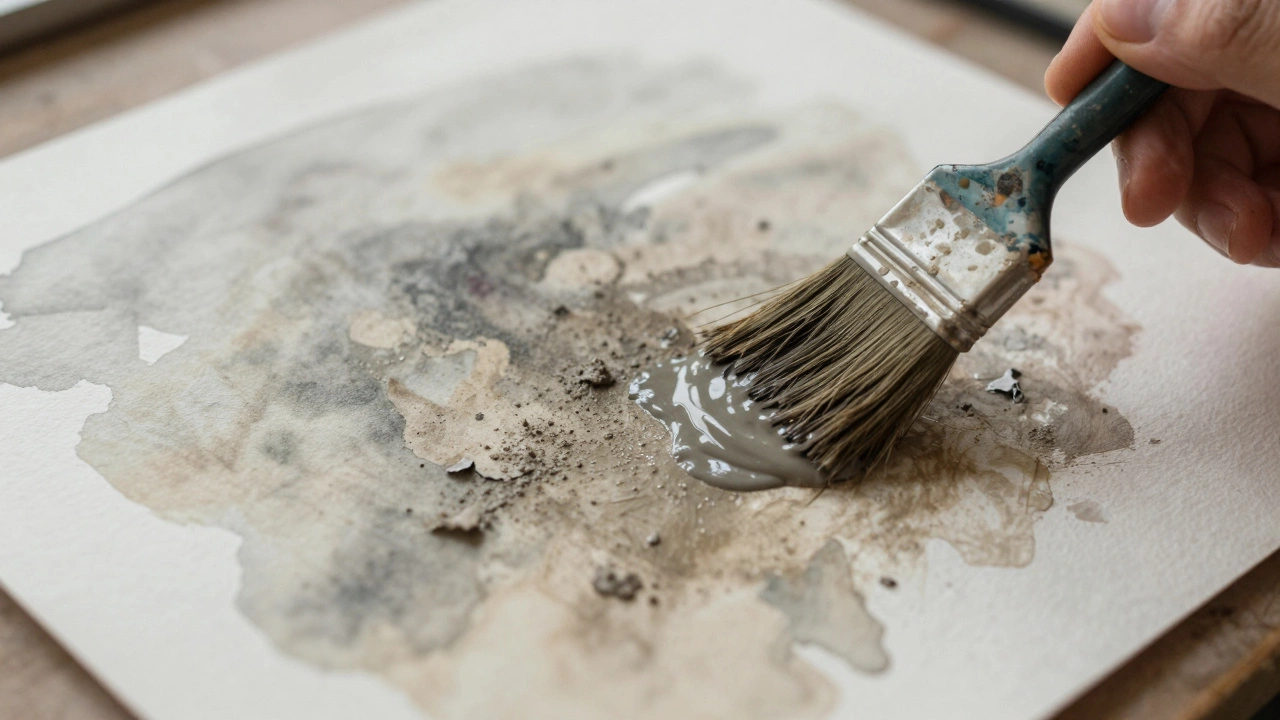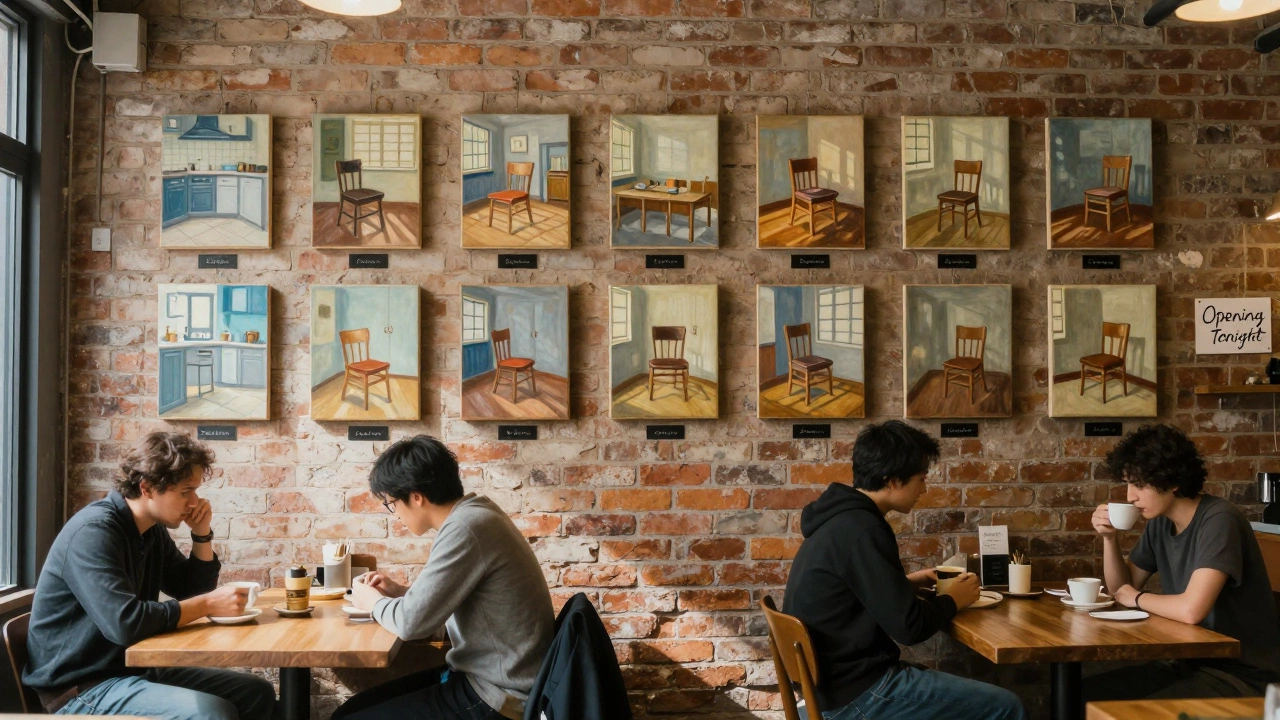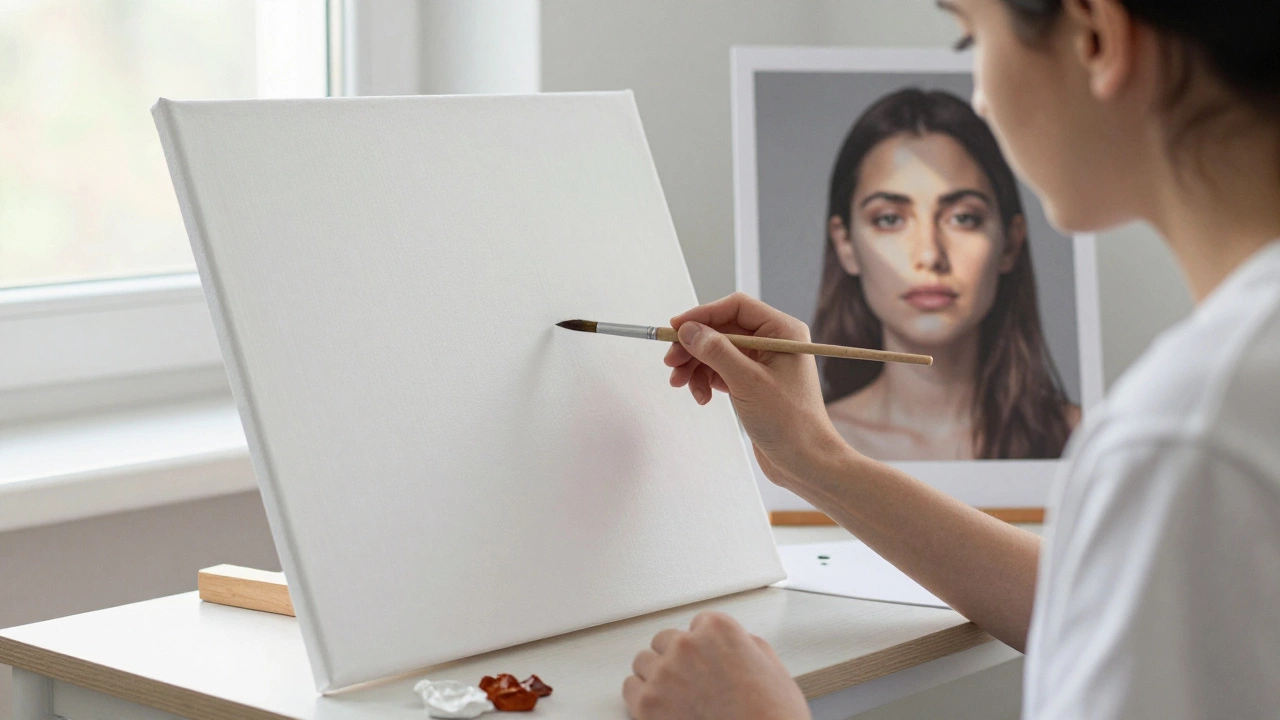Landscape painting, a journey through the vistas of art, offers a glimpse into the serene beauty of nature captured on canvas. Though many might trace its origins back to classical art, it truly began to flourish during the Renaissance with artists like Pieter Bruegel the Elder. Widely considered one of the fathers of this captivating art form, Bruegel's revolutionary approach opened new avenues for future artists to explore and portray the world around them.
The genre of landscape painting has undergone numerous transformations over time, shaped by cultural shifts and artistic techniques. These paintings have transcended their roles as mere depictions of natural scenes to become reflective of the human experience and our place within the environment. Through the brushstrokes of masters, both past and present, we see the reflection of society's relationship with the world around us.
- Origins and Definition of Landscape Painting
- Pieter Bruegel the Elder and His Influence
- Evolution Through Centuries
- Techniques and Styles in Landscape Art
- Key Figures in Landscape Painting
- Modern Landscape Painter Inspirations
Origins and Definition of Landscape Painting
The term landscape painting traditionally refers to artworks depicting natural scenes, emphasizing elements like mountains, forests, rivers, and fields. This form of art dates back to ancient times, with early examples seen in Roman frescoes, which incorporated panoramic vistas as backdrops in homes and public spaces. However, these depictions served more as embellishments rather than subjects in their own right. It wasn't until the Renaissance that landscape began to garner independent recognition.
During the Renaissance, a remarkable shift occurred as artists started to see the world through a different lens. With a growing appreciation for nature's splendor, they began collecting sketches from life, studying natural elements meticulously. As opposed to simply serving religious or mythological themes, landscapes began to stand alone as a celebration of the natural world. The term 'landscape' itself is derived from the Dutch word 'landschap', which articulated the intimate connection between man and his surroundings, and was a concept notably advanced in the Low Countries.
Research into the birth of landscape painting has often highlighted the work of the Flemish artist Pieter Bruegel the Elder, who played a pivotal role in the genre’s development during the 16th century. Bruegel's paintings like 'The Harvesters' present majestic scenes of everyday life seamlessly integrated into vast natural vistas. His ability to marry storytelling with natural beauty proved influential, making him a significant figure in art history. As art historian Simon Schama noted, "Bruegel's landscapes challenged how we visually consume the world, not just as a backdrop, but as an entity deserving our full contemplation."
“The real voyage of discovery consists not in seeking new landscapes, but in having new eyes.” – Marcel Proust
As the popularity of landscapes surged, the 17th-century Dutch Golden Age brought further refinement to the genre. Artists like Jacob van Ruisdael and Jan van Goyen advanced the depiction of realistic skies and atmospheres, influencing techniques that would persist into modern times. Their mastery over light and shadow, and their ability to convey mood through their landscapes, remain subjects of admiration and study by art enthusiasts and scholars alike. Notably, landscape painting became an integral art form through which humanity sought to express its complex relationship with the natural world.
Pieter Bruegel the Elder and His Influence
Pieter Bruegel the Elder, a central figure in the history of landscape painting, revolutionized the way artists approached nature and life. Born around 1525 in what is now Belgium, Bruegel was part of a vibrant cultural scene during the Northern Renaissance, a time when artists began to explore themes beyond religious iconography. Demonstrating an extraordinary ability to capture the essence of scenes, he portrayed landscapes with emotional depth and narrative richness, eschewing mere background decoration for expressive storytelling. His keen observation of life and nature helped him to craft works that speak to the humanity residing within every vista.
One of Bruegel’s seminal contributions was his ability to depict landscapes that reflect the changing moods of the seasons, a theme most famously captured in his celebrated painting series, "The Seasons." His 1565 work, "Hunters in the Snow," remains a definitive piece in art history, depicting weary hunters and their dogs returning home amid a cold, picturesque landscape. This work provides not just visual beauty, but also conveys the complexity of human life against the backdrop of nature’s timeless cycles. Bruegel often injected social commentary into his landscapes, tethering them to the real-life struggles and joys of everyday people. His commitment to showcasing the ordinary in extraordinary settings endeared him to his contemporaries and left a lasting legacy for artists to come.
Bruegel's influence persisted long after his passing in 1569. The depth and authenticity of his landscapes inspired countless artists across Europe, encouraging them to pursue nature on its own terms, to find in it stories as compelling as the grandest historical scenes. His work paved the way for the development of the Dutch Golden Age landscape painters, including the likes of Jacob van Ruisdael and Aelbert Cuyp. These artists embraced Bruegel's techniques and philosophies, using them to cultivate landscapes that celebrated the unique topographies and atmospheres of their homeland.
"Bruegel's genius was his ability to weave together the grandeur of nature and the insight into the human condition," noted historian Simon Schama, underscoring Bruegel's enduring impact on art as a narrative tool charged with emotional resonance.If we examine Bruegel's role in cultural and artistic evolution, we find a pivotal figure whose work resonates with the notion that art can be a mirror reflecting the intricate dance of humanity with nature. His legacy continues to shape contemporary understandings of both landscape painting and broader artistic endeavors, propelling forward a genre that remains vibrant and relevant today.
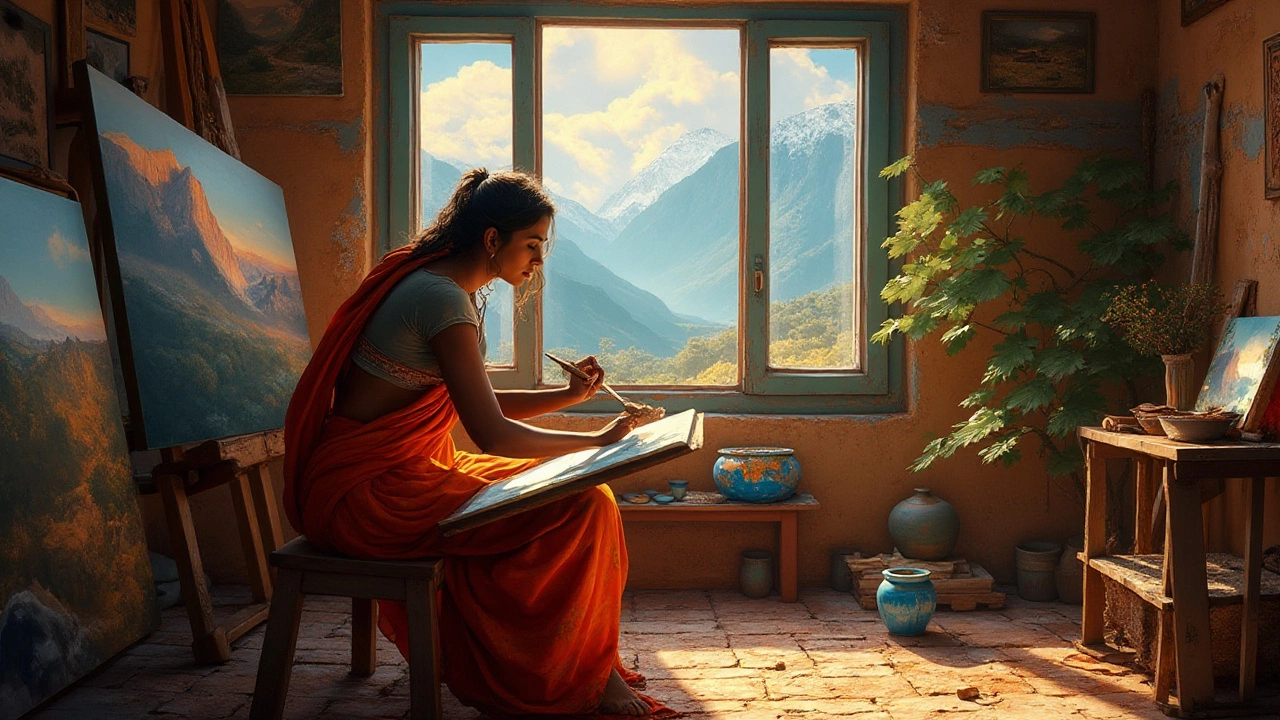
Evolution Through Centuries
The journey of landscape painting is a captivating evolution, deeply intertwined with the tapestry of human history and culture. In its early days, the genre was largely seen as a backdrop in religious and mythological scenes during the Middle Ages. Artists like those in the Byzantine era used landscapes merely to frame larger narratives. Yet, Renaissance artists began to see the potential in nature as a subject of art in its own right. Pieter Bruegel the Elder, often hailed as a pivotal figure, depicted the natural world with a focus and intent that broke away from past traditions, bringing landscapes to the forefront of artistic endeavors.
As the 17th century dawned, the Dutch Golden Age heralded a new era where the landscape was celebrated for its intrinsic beauty. With artists like Jacob van Ruisdael and Jan van Goyen, the focus shifted from religious iconography to a profound appreciation for the world around us. These artists captured the luminous skies and serene waterways of the Netherlands with meticulous detail and a keen eye for atmospheric effects. Their work embraced the natural light and the subtle interplay of seasons, capturing more than just topographical accuracy—they conveyed mood and emotion.
Entering the Romantic period of the 18th and early 19th centuries, landscape artistry found its voice in expressive grandeur. Painters like J.M.W. Turner and Caspar David Friedrich used bold brushstrokes and vibrant colors to stir emotions and reflect the era's burgeoning appreciation for awe-inspiring and sublime natural phenomena. Their canvases were filled with dramatic vistas embedded with deep philosophical whispers about the human condition and the natural environment. Turner, often called the "painter of light," famously declared that "painting is a strange miracle," realizing the transformative power of landscape art.
The Impressionists in the late 19th century, led by Claude Monet, further revolutionized landscape painting by exploring the effects of changing light and color in their plein air works. Their innovative approach shifted the focus from realistic representation to capturing fleeting moments and sensory experiences of nature. As Monet himself stated, "I wish I had been born blind, and then had suddenly gained my sight, so that I could begin to paint without knowing what the objects were before me." This era marked a significant departure as landscapes became more about perceiving and experiencing rather than mere portrayal.
With the rise of the 20th century, modernism brought an abstraction to landscape painting. Artists like Georgia O'Keeffe embraced bold colors and forms to depict the essence and emotional resonance of landscapes. Abstract Expressionists and other movements saw landscapes as a means of exploration into subjective visions rather than objective realities. Today, contemporary landscape artists continue to innovate, integrating digital techniques and environmental themes, reflecting humanity's ongoing dialogue with the Earth. The evolution of landscape art, a poignant testament to our evolving consciousness, remains a beloved chapter in art history that continues to resonate with new generations.
Techniques and Styles in Landscape Art
Landscape painting is an expansive realm where diverse techniques and styles bloom, offering artists endless possibilities to express their vision of nature. From the intricate brushwork of the Dutch Golden Age to the vivid palettes of the Impressionists, each technique brought a distinctive touch to the world of landscapes. The journey began with the detailed and structured compositions of painters like Pieter Bruegel the Elder, who meticulously balanced form, perspective, and narrative to bring scenes to life. This period embraced linear perspectives and restrained color schemes, providing a profound sense of space within a landscape. Artists also expanded their palettes to embrace subtle gradations of color, capturing the changing moods of light and weather, which was a direct reflection of the evolving understanding of atmospheric conditions.
The Romantic era introduced a shift towards emotion and drama, where artists sought to evoke feelings of awe and sublimity through their depictions of nature. They employed techniques like chiaroscuro, emphasizing contrasts between light and shadow to create depth and mood. We can see these evocative plays of light magnificently captured in the works of Turner and Friedrich, who celebrated nature's power and mystery. Their landscapes were not just geographical; they were steeped in symbolism and imbued with a spiritual undertone, telling stories far beyond the edges of the canvas. As John Constable famously observed,
"Painting is but another word for feeling."Such perspectives were pivotal in transitioning landscape art from a mere backdrop to the protagonist of the canvas.
The Impressionist movement, with pioneers such as Monet and Renoir, further revolutionized landscape art by breaking down traditional barriers and introducing plein air painting. By painting outdoors, these artists captured the fleeting effects of light with spontaneous brushworks and vibrant hues. This freedom brought a fresh dynamism to their landscape paintings, offering viewers a new way to experience nature's vitality and transience. Their approach was less about precision and more about capturing the essence of a moment, leading to canvases that felt spontaneous yet profoundly harmonious.
Modern landscape paintings continue to evolve, drawing on past techniques while incorporating new technologies and evolving media. Artists experiment with textures, mixed media, and digital tools, pushing boundaries and redefining the concept of landscapes. This evolution is a testament to the resilience and adaptability of landscape art through time, as it continues to reflect our changing perceptions of the world around us. As we navigate this artistic tapestry, it becomes evident how landscape art embodies both the constancy and the ever-changing facets of nature itself.
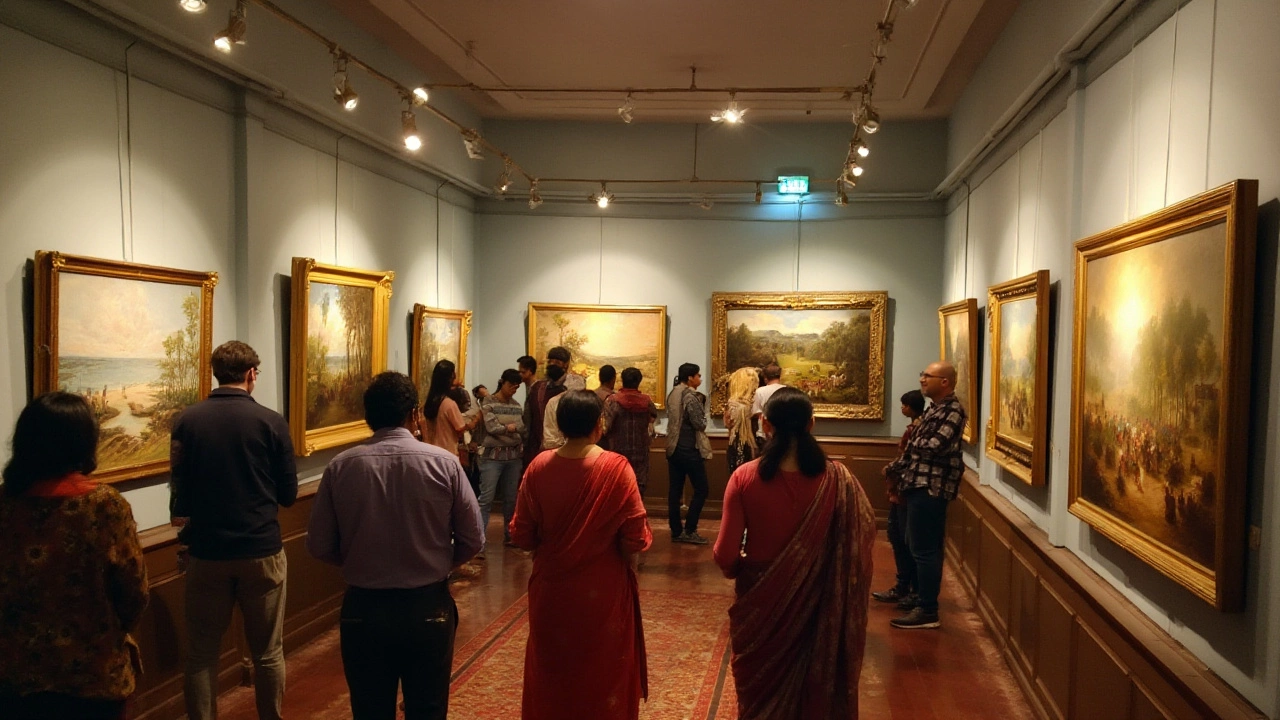
Key Figures in Landscape Painting
The journey of landscape painting is punctuated by the contributions of remarkable artists who shaped the genre into what we know today. Among these pioneering figures, Pieter Bruegel the Elder stands out as a colossal influence. Born in the 16th century in Belgium, Bruegel is credited for elevating landscapes from mere background elements to the main subjects of his works. His paintings, filled with both rustic charm and satirical observations of humanity, captured the vastness of nature beautifully, leaving viewers both awestruck and contemplative. His work laid the foundation for future generations, with pieces like "The Hunters in the Snow" and "The Harvesters" becoming benchmarks of this art form. As the painter himself once expressed through his brushwork, art is often a reflection of life's subtleties, where man, nature, and imagination harmoniously coexist.
The evolution of landscape art continued with artists like Claude Lorrain and Jacob van Ruisdael. They propelled the genre forward during the Baroque period. Lorrain, a French painter, was renowned for his idealized representations of nature, where light and atmospheric perspective played critical roles in creating poetic landscapes. His ability to depict the sublime beauty of nature inspired many, including the Romanticists in the later centuries. Jacob van Ruisdael, on the other hand, brought the power of the Dutch countryside into the canvas with his dramatic skies and dynamic compositions, showcasing the raw and sometimes tumultuous aspect of nature. An interesting fact about van Ruisdael is his profound understanding of natural elements, which he often studied intensely before translating them into his works. These artists contributed significantly to the essence and spirit of landscape painting, ensuring that the art form resonated widely across Europe and beyond.
Transitioning into the 19th century, the genre saw significant advancements through the works of artists such as J.M.W. Turner and John Constable. Turner was known for his expressive colorization and the poetic portrayal of light and atmosphere. His innovative techniques paved the way for impressionism and modern art movements, making him a key figure in the landscape painting's trajectory. As Turner's vivid landscapes demonstrated, art can often evoke emotion and stir reflection, inviting a deep connection with the viewer. John Constable, often painting the serene English countryside, utilized a more realistic approach that captured the changing tones of nature with great sensitivity. His dedication to painting nature as it was, without embellishment, endeared him to many and confirmed his standing as a pioneering landscape artist.
With the dawn of the modern era, the contributions of artists like Georgia O'Keeffe and David Hockney became pivotal. O'Keeffe's striking interpretations of American landscapes pushed the boundaries of the genre, incorporating elements of abstraction. Her landscapes, often vibrant and enlarged, reflect the power of nature's forms and colors, offering a fresh perspective on well-trodden paths. On the other hand, Hockney's vibrant depictions challenge traditional views of landscapes, infusing the genre with modernity and a new visual language. As highlighted by an art critique, "
His fresh use of color and composition redefined the landscapes, merging tradition with contemporary elements into a seamless visual symphony." These modern giants continue to inspire new generations of artists and enthusiasts, further enriching the history and breadth of landscape painting.
Modern Landscape Painter Inspirations
Today's landscape painters draw inspiration from an array of sources, integrating traditional methods with contemporary themes that address modern-day concerns. Many artists find themselves captivated by the dynamic and often fragile relationship between humans and the environment, infusing their work with a sense of urgency that reflects the present-day climate crisis. Artists are increasingly looking not just at the breathtaking vistas and terrains around them, but also considering industrial landscapes and the marks left by mankind. This shift in focus comes with a message, calling attention to global issues while still celebrating the beauty in the world around us.
One can see this dual approach in the works of well-known artists such as Olafur Eliasson, who uses large scale installations to express environmental concerns. His use of raw natural elements, such as water and light, make viewers contemplate the ongoing changes to our planet. Another influential figure in contemporary landscape art is British artist Jeremy Gardiner. Gardiner combines technology with traditional painting methods, using geological models and maps to inform his pieces, which explore the concept of time and topography in the UK's Jurassic Coast. His works vividly illustrate the power of landscape art to communicate both passive beauty and complex ideas.
A core element of these modern inspirations is the advancing technology that opens new doors for artistic expression. Digital art and photography have allowed artists to experiment beyond the traditional canvas. This evolution offers a fresh perspective and a new set of tools. Painters like David Hockney have embraced tablets and digital platforms to create vibrant landscapes that maintain the intensity and intimacy of his earlier works. As Hockney once said,
"The moment you cheat for the sake of beauty, you know you're an artist."His words highlight the ever-evolving nature of art, where the line between reality and artistic interpretation is constantly negotiated.
The accessibility of digital platforms also democratizes art, granting more people entry points into the world of landscape painting. As a result, more voices contribute to the narrative, further diversifying the stories told through this age-old genre. Environmental and social themes seep into these works, fueled by an increased global connectivity. This not only enriches the art form but also enhances public discourse surrounding the depicted subjects, ultimately prompting a deeper reflection about our world.
Even as the world continues to change, the core attraction of landscape painting—its capacity to evoke a profound connection to nature—remains. Whether through a serene pastoral scene or a more abstract representation of contemporary settings, modern landscape painters manage to inspire by transforming their canvases into reflections of both a physical place and the emotional reaction it elicits. Engaging with such diverse works, we gain insights into our relationship with our surroundings, encouraging us to cherish and protect the landscapes we occupy today.
